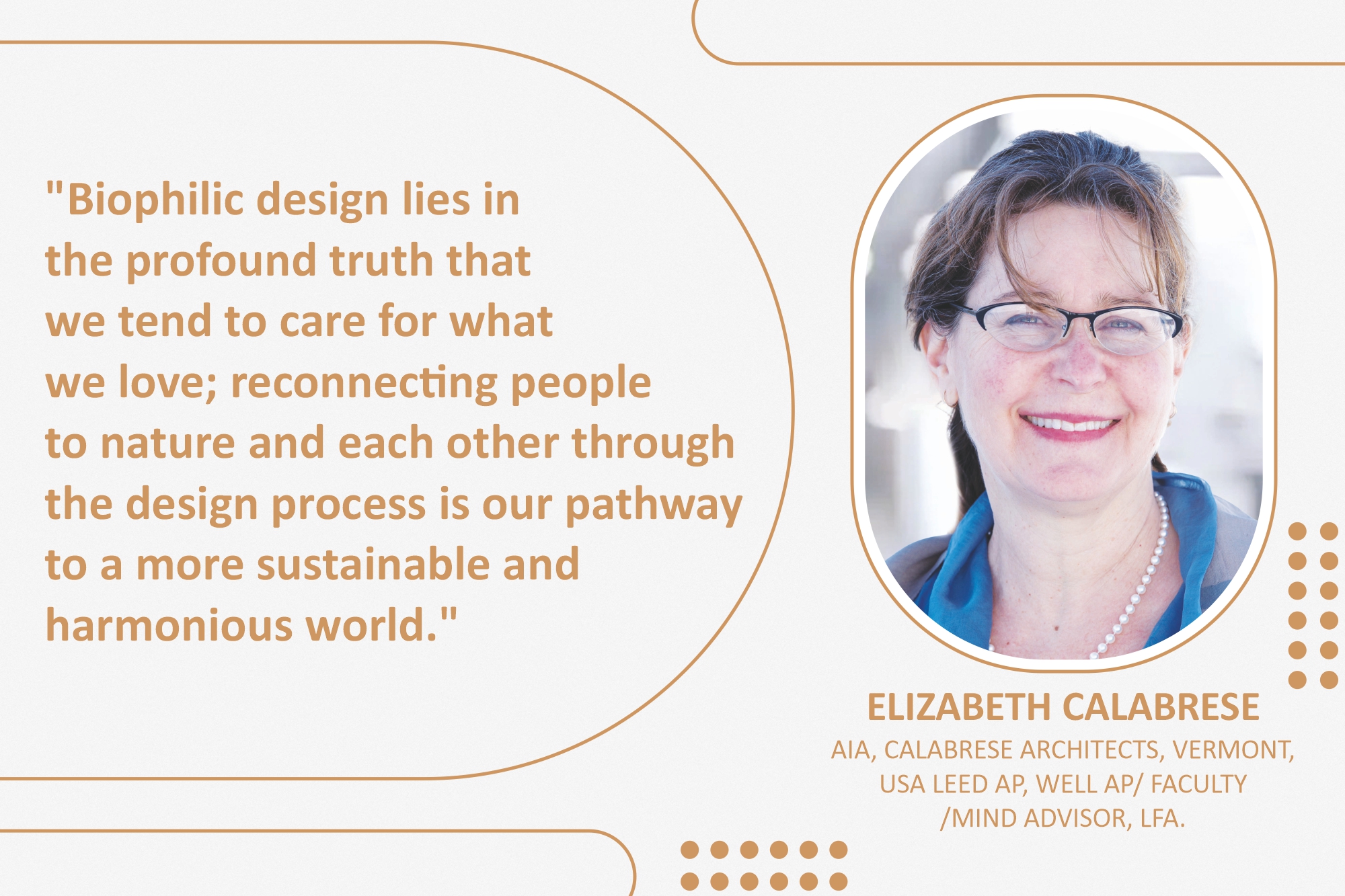The biophilic approach to sustainable architecture

Calabrese Architects’ approach combines the principles of bio-climatic, humanistic, regenerative, and ecological design, capturing the essence of biophilia—the design philosophy based on an affinity for nature.
We adopt a biophilic approach to the design process. Biophilia is our inherent need to connect with life and lifelike processes, considering our evolution as hunter-gatherers. Biophilic design aims to holistically integrate natural systems and processes into the built environment, promoting human and environmental health and well-being. We care for what we love, so reconnecting people to nature and each other through the design process is at the heart of biophilic design.
For example, bio-climatic, humanistic, regenerative, and ecological design are all aspects of designing biophilically. Integrating natural shading and cooling with trees, trellises, and vines creates pleasant spaces and provides connections to habitats for birds, bees, and other creatures. Research shows that humans are healthier and less aggressive when they have access to green space.
Elevated areas with a sense of prospect that feel protected and offer a view of nature can promote relaxation and soft fascination. This mental state occurs when the mind relaxes, and creativity and problem-solving flow while observing rhythmic audio or visual patterns, such as birds chirping, waves lapping, clouds moving, fish swimming, or grasses swaying.

Abundant daylight in interior spaces reduces the need for artificial lighting and energy use while helping to maintain a healthy circadian rhythm, hormone balance, and sleep-wake cycle for occupants. Projects incorporating local materials and craftspeople promote a sense of connection to and stewardship of the surrounding community and local ecology while reducing the carbon footprint of transporting materials from afar.
Beautiful aesthetics can often be achieved by incorporating natural systems and processes into design solutions. Celebrate rain and collect water with rain chains, biodiverse constructed wetlands, and flowing water features that integrate local ecologies. Courtyards with fountains, indigenous flora, and fauna can provide cooling during hot months and offer visual and physical connections to nature and each other. Operable windows and doors with balconies allow occupants to control natural ventilation when the weather is pleasant, ensuring buildings do not rely on mechanical systems 100 percent of the time and can remain habitable during power outages. Nature is the most efficient and powerful source of brilliance and energy, so working with nature’s abundant systems and processes, rather than against them or trying to control or conquer them, is the most energy-efficient and material-conscious way forward.
Built environments people cherish and feel connected to are usually deeply tied to place, culture, and ecology. Stephen Kellert (1943–2016), the pioneer of biophilic design, stated that biophilia was the missing link to sustainability, and I strongly believe this to be true. Weaving nature and natural systems and processes into design solutions to promote human and environmental health and well-being is a beautiful and efficient path towards creating a better world for all.
50
Cookie Consent
We use cookies to personalize your experience. By continuing to visit this website you agree to our Terms & Conditions, Privacy Policy and Cookie Policy.







